 Food Science Text SeriesSeries Editor Dennis R. Heldman, Professor, Department of Food, Agricultural, and Biological Engineering, The Ohio State University Editorial Board Members John Coupland, Professor of Food Science, Department of Food Science, Penn State University Mario Ferruzzi, Professor of Food Science and Nutrition, Department of Food Bioprocessing and Nutrition, North Carolina State Richard W. Hartel, Professor of Food Engineering, Department of Food Science, University of Wisconsin Rubn Morawicki, Assistant Professor of Food Science, Department of Food Science, Universisty of Arkansas S. Suzanne Nielsen, Professor and Chair, Department of Food Science, Purdue University Juan L. Silva, Department of Food Science, Nutrition and Health Promotion, Mississippi State University The Food Science Text Series provides faculty with the leading teaching tools. The Editorial Board has outlined the most appropriate and complete content for each food science course in a typical food science program and has identified textbooks of the highest quality, written by the leading food science educators.
Food Science Text SeriesSeries Editor Dennis R. Heldman, Professor, Department of Food, Agricultural, and Biological Engineering, The Ohio State University Editorial Board Members John Coupland, Professor of Food Science, Department of Food Science, Penn State University Mario Ferruzzi, Professor of Food Science and Nutrition, Department of Food Bioprocessing and Nutrition, North Carolina State Richard W. Hartel, Professor of Food Engineering, Department of Food Science, University of Wisconsin Rubn Morawicki, Assistant Professor of Food Science, Department of Food Science, Universisty of Arkansas S. Suzanne Nielsen, Professor and Chair, Department of Food Science, Purdue University Juan L. Silva, Department of Food Science, Nutrition and Health Promotion, Mississippi State University The Food Science Text Series provides faculty with the leading teaching tools. The Editorial Board has outlined the most appropriate and complete content for each food science course in a typical food science program and has identified textbooks of the highest quality, written by the leading food science educators.
More information about this series at https://www.springer.com/series/5999 Richard Owusu-Apenten Ernest R. Vieira Elementary Food Science Fifth Edition Richard Owusu-Apenten Ernest R. Vieira School of Biomedical Sciences Georgetown, MA, USA Faculty of Health and Life Sciences University of Ulster Coleraine, Londonderry, UK ISSN 1572-0330 ISSN 2214-7799 (electronic) Food Science Text Series ISBN 978-3-030-65431-3 ISBN 978-3-030-65433-7 (eBook) https://doi.org/10.1007/978-3-030-65433-7 Springer Nature Switzerland AG 2023 This work is subject to copyright. All rights are reserved by the Publisher, whether the whole or part of the material is concerned, specifically the rights of translation, reprinting, reuse of illustrations, recitation, broadcasting, reproduction on microfilms or in any other physical way, and transmission or information storage and retrieval, electronic adaptation, computer software, or by similar or dissimilar methodology now known or hereafter developed. The use of general descriptive names, registered names, trademarks, service marks, etc. in this publication does not imply, even in the absence of a specific statement, that such names are exempt from the relevant protective laws and regulations and therefore free for general use.
The publisher, the authors, and the editors are safe to assume that the advice and information in this book are believed to be true and accurate at the date of publication. Neither the publisher nor the authors or the editors give a warranty, expressed or implied, with respect to the material contained herein or for any errors or omissions that may have been made. The publisher remains neutral with regard to jurisdictional claims in published maps and institutional affiliations. This Springer imprint is published by the registered company Springer Nature Switzerland AG The registered company address is: Gewerbestrasse 11, 6330 Cham, Switzerland Foreword In the spring of 1970, I was a senior at the University of Rhode Island looking forward to graduation in a few months. My mentor at URI, Arthur Rand, called me in and told me of an opening at an agriculture school in Massachusetts for an instructor in food science. The school, The Essex Agricultural and Technical Institute, did not have a program at the time, so the position included setting up the new program which would offer an Associate of Applied Science degree in food science.
At the interview, the first question from the director of the schools college division was what is food science? I paused and answered, how much time do you have? I would answer that question with the same response today, over 50 years later. Food science includes such a wide variety of areas, all of which require application of the basic sciences such as mathematics, biology, chemistry, and physics. How we as food scientists use these tools to create and maintain a food supply that is safe, nutritious, convenient, and affordable is surely a formidable task that is as important to the world health as any. The diverse positions my graduates have filled over the years clearly exemplifies this. Some of these professions include food processing, food product develop ment, quality assurance, food safety, nutrition, public health, and education. In the fifth edition of Elementary Food Science, Dr.
Owusu-Apenten builds upon the prior work done by Nickerson, Ronsivalli, and me, and included are the many changes in food science and how they affect the world. As food scientists, we must share this information with young people so that our pro fession, so critical to the future health of our planet, will attract talented, enthusiastic, and creative students. Since my retirement, I have volunteered at grammar and high schools and have had so much fun watching young people marvel at the wonders of food science. One of my grandsons put it best, Grampi, food science is really magical! I agree. Professor Emeritus Ernest R. Vieira North Shore Community College Danvers, MA, USA v Preface to 5th Edition The well-received book Elementary Food Science has been updated and revised, retaining many attractive features from the 4th edition, in particular science and food handling remains evident in the 5th edition.
However, the pace of change in food science has been rapid over the past 15 years. The quantity of food science has grown also as part of the wider information and digital revolution. Interestingly, the quality of the internet and online materials varies enormously, which can pose problems for the novice student or general reader. The twenty-first century emphasizes on student-centered instruction means that the student must demonstrate independent research skills, knowledge, understanding, critical thinking, and reflective writing. In view of such considerations, some notable changes in the book were: 1. Interrelated Food Science Topics (Part 1).
This part has been shortened from nine to six chapters with enzymes and chemical reactions sections dispersed to other chapters. Two new expository chapters highlighting the food ) have been added to the 5th edition. 2. Food Safety and Sanitation (Part 2). Food safety is a new part, expanded from two to four chapters due to the trend for compulsory food-safety management. 3.
Food Preservation and Processing (Part 3). This combines four chapters from the previous edition with two new chapters dealing with basic con siderations in food processing (Chap. 11) and the quality of dried foods (Chap. 15). 4. Handling and Processing Food (Part 4).
The topics fats and oils are dis persed in the text while updating and retaining eight out of nine chapters from the 4th edition. 5. Consumer expenditure for out of home eating now exceeds spending for home eating. A new Chap. 25 dealing with the foodservice and catering industries has been added, introducing this important topic for food sci ence students. R. (2013). (2013).
Elementary Food Science (4th Edition), Springer Science & Business Media, 423 pp. Other editions appeared in 1976 and 1980, 1995, & 2013 (4th Edition). vii viii Preface to 5th Edition 6. The North American Industry Classification System (NAICS) is intro duced throughout to emphasize strong links between science and the food industry. 7. Material for experimental food science and culinary arts is moved to the upcoming supplement.
Overall, employability and career paths in food science are more coherent than ever, from high schools all the way to section managers, product devel opers, or research scientist. Ironically, industry demand is growing for cross expertise covering food science, human nutrition, culinary arts and foodservices. The 5th edition speaks also to some controversial public health issues, such as the suggested link between ultra-processed foods and chronic illness. The core readership for
Next page
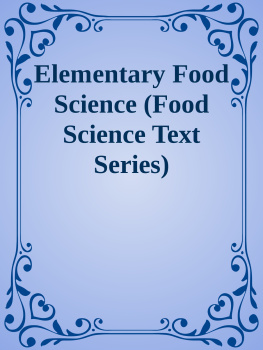

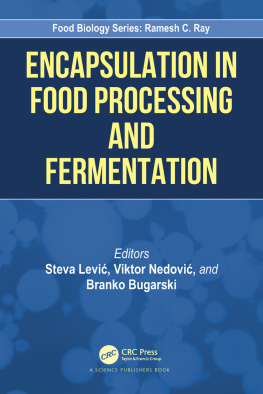

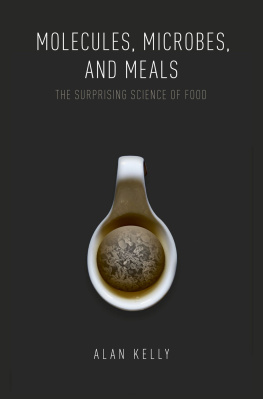
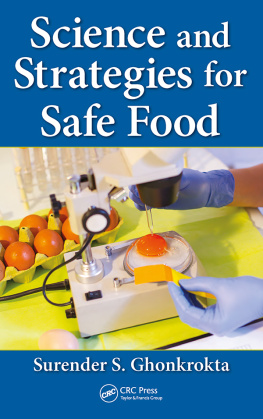
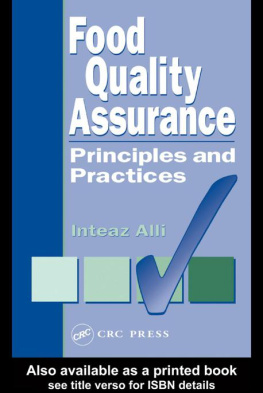
 Food Science Text SeriesSeries Editor Dennis R. Heldman, Professor, Department of Food, Agricultural, and Biological Engineering, The Ohio State University Editorial Board Members John Coupland, Professor of Food Science, Department of Food Science, Penn State University Mario Ferruzzi, Professor of Food Science and Nutrition, Department of Food Bioprocessing and Nutrition, North Carolina State Richard W. Hartel, Professor of Food Engineering, Department of Food Science, University of Wisconsin Rubn Morawicki, Assistant Professor of Food Science, Department of Food Science, Universisty of Arkansas S. Suzanne Nielsen, Professor and Chair, Department of Food Science, Purdue University Juan L. Silva, Department of Food Science, Nutrition and Health Promotion, Mississippi State University The Food Science Text Series provides faculty with the leading teaching tools. The Editorial Board has outlined the most appropriate and complete content for each food science course in a typical food science program and has identified textbooks of the highest quality, written by the leading food science educators.
Food Science Text SeriesSeries Editor Dennis R. Heldman, Professor, Department of Food, Agricultural, and Biological Engineering, The Ohio State University Editorial Board Members John Coupland, Professor of Food Science, Department of Food Science, Penn State University Mario Ferruzzi, Professor of Food Science and Nutrition, Department of Food Bioprocessing and Nutrition, North Carolina State Richard W. Hartel, Professor of Food Engineering, Department of Food Science, University of Wisconsin Rubn Morawicki, Assistant Professor of Food Science, Department of Food Science, Universisty of Arkansas S. Suzanne Nielsen, Professor and Chair, Department of Food Science, Purdue University Juan L. Silva, Department of Food Science, Nutrition and Health Promotion, Mississippi State University The Food Science Text Series provides faculty with the leading teaching tools. The Editorial Board has outlined the most appropriate and complete content for each food science course in a typical food science program and has identified textbooks of the highest quality, written by the leading food science educators.